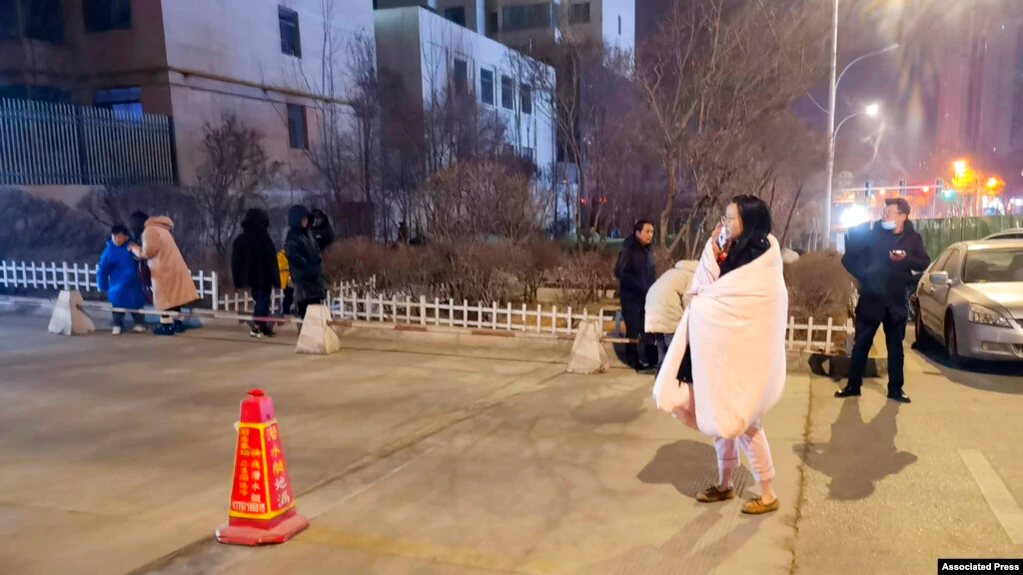China's deadliest earthquake in recent years: at least 126 fatalities and 700 injuries

An earthquake, with a magnitude of 6.2, occurred in Gansu province around midnight on Monday and is the most serious incident of its kind in years. The quake resulted in a death toll of at least 126 people in north-west China, affecting the neighboring Qinghai province. Furthermore, more than 700 people are reported injured in freezing conditions and thus the number of fatalities may be increased.
The US Geological Survey recorded a magnitude equal to 5.9 with a depth of 10km while approximately 10 aftershocks have been reported. The European Mediterranean Seismological Centre said it was a magnitude 6.1 earthquake. The quake's epicenter was in Linxia Hui Autonomous Prefecture, home to various Chinese Muslim groups. Xinjiang, the province west of Gansu, experienced a 5.5 magnitude quake on Tuesday, but there were no immediate reports of casualties.
China, situated in a seismically active region where multiple tectonic plates meet, faces an elevated risk of earthquakes. The Gansu earthquake is the deadliest in China since 2014, when over 600 people lost their lives in a quake in Yunnan province. In addition, in 2010, a devastating earthquake in Yushu, Qinghai province, claimed almost 2,700 lives.
On Tuesday, images shared on social media depicted entire villages split by the quake, along with collapsed structures. Displaced residents were seen gathering around makeshift fires at hastily set-up evacuation camps as temperatures dropped to -13C. Survivors described the tremors as akin to "being tossed by surging waves". President Xi Jinping has ordered thousands of rescue personnel to the region, known for its poverty and ethnic diversity.
Chinese media reported that the worst-hit area, Jishishan county in Gansu province, suffered damage to more than 5,000 buildings. The Gansu rescue team director attributed the extensive destruction to substandard building quality, as many homes were old and constructed with clay. Gansu, situated between the Tibetan and Loess plateaus and bordering Mongolia, is one of China's poor and ethnically diverse regions.
Power and water supplies have been disrupted across the region, hampering the ongoing rescue operations. Authorities emphasize the critical need to save individuals in the freezing conditions. Wang Yi, chief commander of the Blue Sky Rescue Team, China's largest non-governmental humanitarian organization, foresees a rise in casualties. President Xi has called for all-out efforts to conduct search and rescue operations, provide timely medical treatment to the injured, and minimize casualties.
Sources: bbc.com, aljazeera.com, cnn.com, time.com
Image Gallery
Media
- Houses collapse after 6.2-magnitude earthquake hit China
- More than 100 killed in earthquake in China
- Northwest China earthquake kills 111 and injures 200
Want to read more like this story?

6.5-Magnitude Earthquake in China's Xinjiang
Jul, 03, 2015 | NewsA 6.5-magnitude earthquake that hit China's northwestern Xinjiang province, has claimed 6 lives and...

Two powerful earthquakes hit China: Reports of 3 people dead
May, 24, 2021 | NewsTwo separate, strong earthquakes that struck in China have resulted in, at least, 3 fatalities. The...

5.4 magnitude shallow earthquake hits southwestern China
Jan, 04, 2022 | NewsAt least 22 people have been injured after a shallow earthquake in southwestern China that also sho...

Earthquake in eastern China: houses collapsed and at least 21 people injured
Aug, 06, 2023 | NewsA strong earthquake hit eastern China on Sunday. The quake caused houses to collapse and injured at...

6.9 Magnitude Earthquake Shakes Remote Area in Western China – 4 people injured
Jan, 08, 2022 | NewsA magnitude 6.9 overnight earthquake shook a sparsely populated area in western China early Saturda...

A 5.5 magnitude earthquake struck southern Iran
Oct, 19, 2023 | NewsA 5.5 magnitude earthquake struck the southern region of Hormozgan Province in Iran on Tuesday morn...

A 7.0-magnitude earthquake struck along the border of China and Kyrgyzstan: at least three fatalities
Jan, 23, 2024 | NewsA 7.0-magnitude earthquake struck along the border of China and Kyrgyzstan. The earthquake occurred...

Southwest China: 6.8-magnitude earthquake leaves at least 46 dead
Sep, 05, 2022 | NewsA 6.8-magnitude earthquake shook China's southwestern province of Sichuan on Monday, triggering lan...

A catastrophic 7.1-magnitude earthquake struck Tibet: at least 126 people fatalities
Jan, 07, 2025 | NewsA strong earthquake of 7.1 magnitude rattled a remote region of Tibet. The earthquake hit on Tuesda...
Trending

Spectacular interchanges around the world

New Release - STAAD.Pro 2024 - 2

ADINA 2025 for Structural WorkSuite

ADINA 2025 New Release!

Concrete Buildings as Rechargeable Batteries

Powerful earthquake shakes central Philippines, dozens killed





